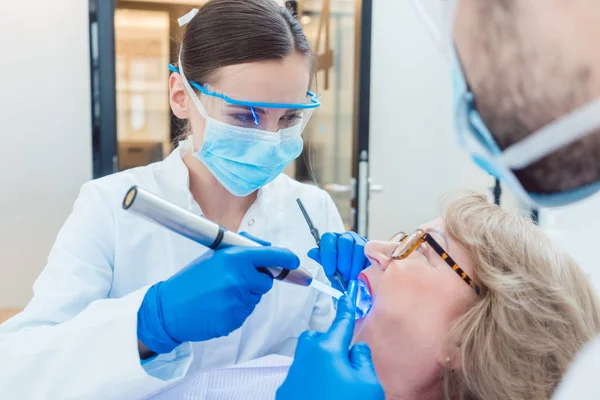Latest Technologies Used by Dentists Near Me to Improve Patient Outcomes
- Written by Business Daily Media
Dentists are healthcare professionals who specialize in treating and diagnosing oral health issues. They are trained to provide a range of dental services, from routine check-ups and cleanings to more complex procedures like root canals and orthodontics.
In Cranbourne, the local dentist is known for their professional and exceptional dental services. With years of experience and a team of highly skilled professionals, they offer a range of dental treatments to cater to their patient’s unique needs. Their state-of-the-art facility is equipped with the latest dental technology and equipment to ensure accurate diagnosis and effective treatment. From routine check-ups and cleanings to advanced cosmetic and restorative procedures, the Cranbourne dentist is committed to providing their patients with high-quality care and personalized attention. They strive to create a comfortable and stress-free environment where their patients can receive the best dental care possible.
- Digital X-rays
Digital X-rays represent a technological advance over older film X-rays. Images of the teeth and gums are recorded using digital sensors and then presented on a computer screen. Dental professionals can diagnose dental issues more easily because of the more precise and detailed images of the teeth and gums provided by digital X-rays. They are also safer for patients because they emit a lot less radiation than conventional X-rays.
- Intraoral Cameras
Images of the inside of the mouth are captured using intraoral cameras, which are compact, portable equipment. The dentist can then examine a precise view of the teeth and gums on a computer screen once these photos have been processed. When it comes to spotting issues like cracks, rotting, or gum disease that might not be obvious to the human eye, this technology is quite helpful.
- Dental Lasers
Dental lasers are used to treat a variety of dental problems, such as gum disease, tooth decay, and tooth sensitivity. They work by delivering a highly concentrated beam of light to the affected area, removing damaged tissue or bacteria. Laser treatment is less invasive than traditional treatments, reducing the need for anaesthesia and minimizing bleeding and swelling. Furthermore, it can promote faster healing times and reduce the risk of infection.

- Cone Beam CT scans
Cone beam CT scans are a type of digital X-ray that creates a three-dimensional image of the teeth and jaws. They are used to diagnose a variety of dental problems, such as impacted teeth, dental implants, and complex tooth extractions. Cone beam CT scans provide a more detailed image than traditional X-rays, making it easier for dentists to plan and perform complex procedures.
- CAD/CAM Technology
CAD/CAM technology stands for computer-aided design and computer-aided manufacturing. It is used to create custom dental restorations, such as crowns, bridges, and veneers. The process involves taking a digital scan of the patient's teeth and using specialized software to design the restoration. The design is then sent to a milling machine, which creates the restoration from a block of porcelain or other dental material. CAD/CAM technology allows for more accurate and precise restorations, reducing the need for multiple appointments and temporary restorations.
- 3D Printing
3D printing technology is being used in dentistry to create a variety of dental products, such as surgical guides, orthodontic aligners, and dentures. 3D printing allows for more accurate and precise production of dental products, reducing the need for manual labour and increasing the speed of production. Moreover, 3D printing technology allows for more personalized and customized dental products, improving patient outcomes.







